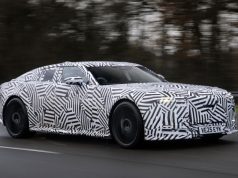Tips and Tricks to Stop Thieves While on the Job or Off
This article may contain affiliate links.
A quiet, efficient electric car or van saves fuel and stress. One broken window and a missing bag can undo that good day fast.
Across towns and cities in the UK and elsewhere in the world, thieves look for quick wins. They check handles, scan for visible bags and try side doors on vans. This is why owners of electric cars, hybrids and efficient gas or diesel models still need a clear plan to keep belongings safe.
If you want practical advice on the right lock for your vehicle, speaking with trusted van security experts can help you choose solid hardware that fits your make and model without making daily use harder.
Why Security Matters
Cleaner transport does not change basic crime patterns. Opportunists take what they can see and what they can reach quickly. Tools, laptops, phones and chargers are common targets because they are easy to resell and hard to trace.
Vans face extra risk because they carry high value equipment and often park on streets overnight.
Short stops create openings. School run, gym visit, parts pickup or a fast-charging session—a thief needs only seconds. Good habits and the right hardware make those seconds useless. The goal is not to build a fortress.
The goal is to remove easy chances and add time and noise to any attempt.
Photo by Tima Miroshnichenko
How Thieves Break In
Door testing and glass strikes. Unlocked doors and visible items are the easiest score. A small tool can pop a quarter window fast.
Peel and steal on vans. Attackers pull at the upper corner of a side door to bend the metal and reach in. Brackets and hook locks stop this by adding strength and a second locking point.
Loom cuts and lock picks. On some models, thieves target wiring looms or weak factory locks. Guards, replacement lock sets and plates protect those weak points.
Keyless tricks. Relay devices boost the signal from a key fob near a door or window. A Faraday bag, or storing keys away from doors, kills that signal.
You do not need to study every tactic. Focus on what applies to your vehicle, where you park and what you carry most days.
Protect What You Carry
Keep the cabin clear. Do not leave bags, tool cases, or boxes in view. Even an empty backpack can invite a smash.
Use lockable storage. If you must carry tools, fit a bolted tool chest or a strongbox that anchors to the vehicle floor. Lock it every time you park. Guidance from the National Business Crime Centre supports simple steps like locking vehicles, securing tools and avoiding overnight storage in vehicles when possible.
Rotate what stays overnight. Bring the highest value tools or devices inside after work if you can. Fewer losses and smoother insurance claims balance the time.
When you plan a job or trip, ask what must ride with you and what can wait. Less cargo means fewer targets.
Add Stronger Locks
Automotive security is a baseline, not the finish line. If you carry equipment for work or travel often with tech in the car, add physical layers that slow attacks. Deadlocks add an extra locking point with a separate key.
Hook locks use a hooked bolt that resists door spreading. Both keep doors closed even if a thief breaks a handle or attacks a latch. Anti-peel brackets stop the top corner of a van side door from bending away from the frame, which blocks peel and steal attempts.
Loom guards and replacement cylinders fix weak spots on certain models by adding tougher metal and smarter placement.
Visible barriers still help. Steering, pedal, and gear locks add time and noise. Products tested to strong standards, as noted by most police, can resist power tools for a short period, which is often enough to make a thief walk away.
A mobile fitter can match the kit to your model, align strikes correctly, seal any cuts and show you how to use everything without slowing your day. That fitting quality matters. Poor placement can cause leaks, rattles or warranty trouble.
If you rely on keyless entry, store fobs in a Faraday bag at home and away from doors. Keep spare keys out of the car. Review your vehicle app settings and disable passive entry if your routine allows it. Small changes close common gaps.
Photo by Tima Miroshnichenko
Park Smart, Keep Records
Parking choices add up over a year of driving and charging. Pick bright spaces near entrances, cameras or steady foot traffic. In a driveway, turn the vehicle so the side loading door faces a wall or fence, not the street.
In multi-story car parks, choose spaces with good lighting and passersby. While you charge, lock doors and keep windows closed. Do not leave items on seats when you step away to stretch or use the facilities.
If your vehicle supports alerts for door unlocks or tilt, enable them. If you add an aftermarket alarm or tracker, choose known brands with support and tested performance.
Good records make recovery and claims easier. Photograph tools and devices, and save serial numbers in a cloud note you can reach from your phone. Mark gear with engraving or UV pens so police can link recovered items to you.
Check your policy terms, since some insurers set rules for overnight parking or storage of tools. If you add locks, guards or secure boxes, keep receipts and fitting proof.
That paperwork shows that you reduced risk and maintained the vehicle properly, which helps a claim pay out without delay.
Security is not only about stopping a theft. It is about keeping your work day on track, keeping family plans on schedule and avoiding days lost to calls and forms. One or two new habits plus a few targeted upgrades can lower your risk by a lot without adding stress.
Get Expert Fitting
A safer car or van comes from layers, not a single gadget. Clear cabins and smart parking cut chances. Strong locks and guards add time and noise.
Clean records speed recovery and claims. If you want a second opinion before you spend, reach out to trusted van security experts for a model-specific view that fits your budget and workload.
The post Protect Your Car and Everything Inside It first appeared on Clean Fleet Report.







